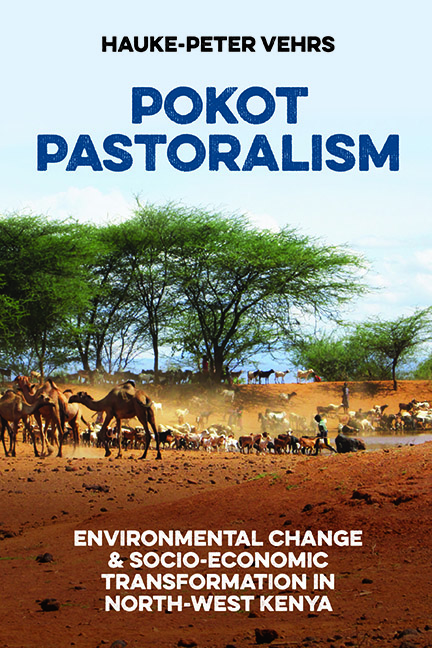Book contents
- Frontmatter
- Dedication
- Contents
- List of Illustrations
- Preface and Acknowledgements
- List of Abbreviations
- 1 Introduction
- 2 East Pokot: A Place and its People
- 3 Pokot Pastoral Livelihoods
- 4 The Paka Community
- 5 Environmental Changes in East Pokot
- 6 Socio-Ecological Transformations in the Agro-Pastoral Highlands
- 7 Ecological Change and Local Livelihoods: Scientific and Pokot Perspectives
- 8 Ecological Invasions: Agents of Socio-Ecological Transformation
- 9 Ecological Challenges and Social Transformations
- Appendix: Lists of Plant Names (Pokot–Scientific and Scientific–Pokot)
- Bibliography
- Index
- Future Rural Africa
5 - Environmental Changes in East Pokot
Published online by Cambridge University Press: 16 July 2022
- Frontmatter
- Dedication
- Contents
- List of Illustrations
- Preface and Acknowledgements
- List of Abbreviations
- 1 Introduction
- 2 East Pokot: A Place and its People
- 3 Pokot Pastoral Livelihoods
- 4 The Paka Community
- 5 Environmental Changes in East Pokot
- 6 Socio-Ecological Transformations in the Agro-Pastoral Highlands
- 7 Ecological Change and Local Livelihoods: Scientific and Pokot Perspectives
- 8 Ecological Invasions: Agents of Socio-Ecological Transformation
- 9 Ecological Challenges and Social Transformations
- Appendix: Lists of Plant Names (Pokot–Scientific and Scientific–Pokot)
- Bibliography
- Index
- Future Rural Africa
Summary
The changing environment and social transformations in East Pokot are not a recent phenomenon. Indeed, changes on different levels have always been part of pastoral landscapes. These are not only the long- or short-term climatic and environmental changes that have had strong influences on pastoral groups in East Africa at different times, but also other challenges such as inter- and intraethnic conflicts, confrontations with the colonial government or the struggle for access to land and resources. In this chapter, I want to highlight one of the various processes of socio-ecological transformation – namely, the transformation of the landscape in East Pokot. The brief description of the ecological conditions at Mt Paka in Chapter 2 already indicates that the pastoral Pokot perceive a change in their environment. However, this description is confined to personal experiences in East Pokot in 2015 and does not necessarily deliver a general picture. Therefore, in this chapter, I want to draw a broader picture of the environmental changes by using different methods to triangulate results that will lead to a better understanding of not only the environmental changes of the past but also recent dynamics.
Regarding the environmental changes described here, I need to distinguish between two different types of environmental change. On the one hand, the extensive grass vegetation in the region has been declining over centuries, while the bush vegetation strongly increased, and this process has accelerated considerably in recent decades. This change particularly affects the pastoralists’ cattle husbandry with its strong dependence on the availability of feed. On the other hand, a second process can be observed: the rapid expansion of different invasive species in certain regions of East Pokot. I will discuss this process in more detail in Chapter 8 when reporting on the links between current land-use changes and human-induced land-cover changes.
In the following, I concentrate on the first process of incremental bush encroachment and explain it in detail by integrating and discussing results from three different research approaches and methods. I start by reviewing the results of archival research to gain an overview of landscape changes as well as the composition of landscape actors. This will show that the disappearance of wild animals plays a particularly important role in landscape design at the beginning of the twentieth century.
- Type
- Chapter
- Information
- Pokot PastoralismEnvironmental Change and Socio-Economic Transformation in North-West Kenya, pp. 80 - 119Publisher: Boydell & BrewerPrint publication year: 2022

